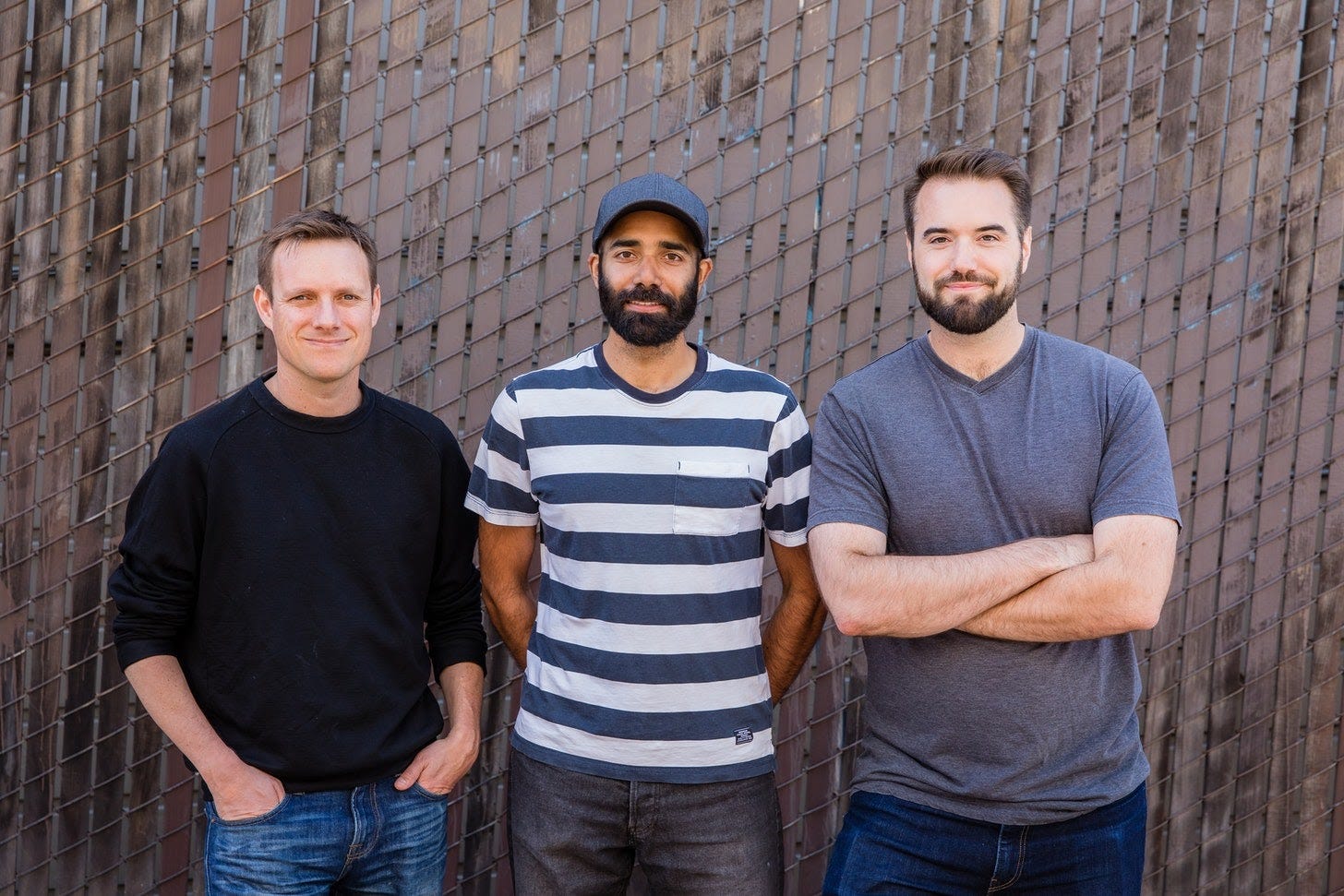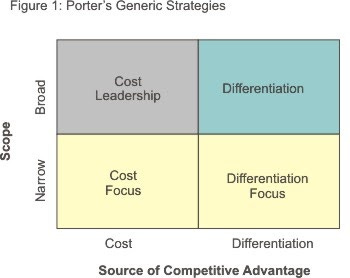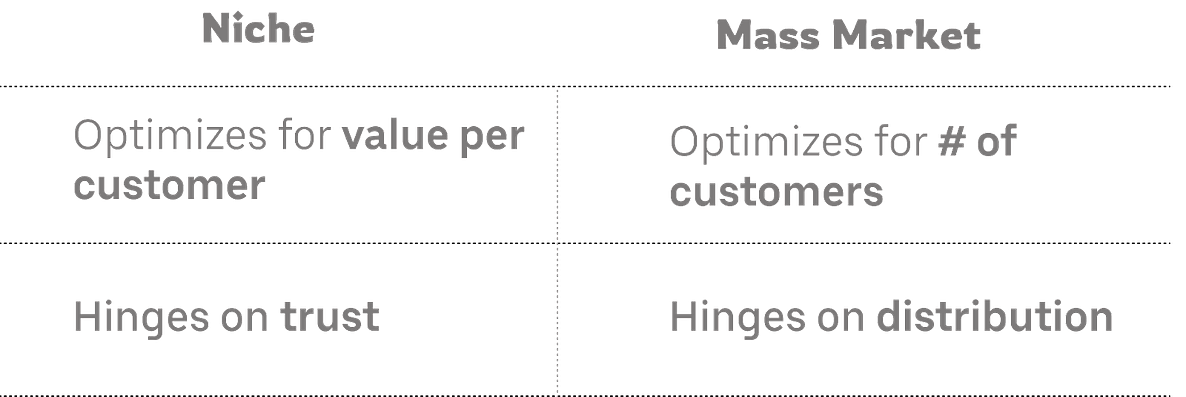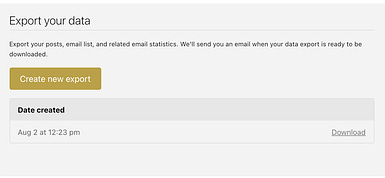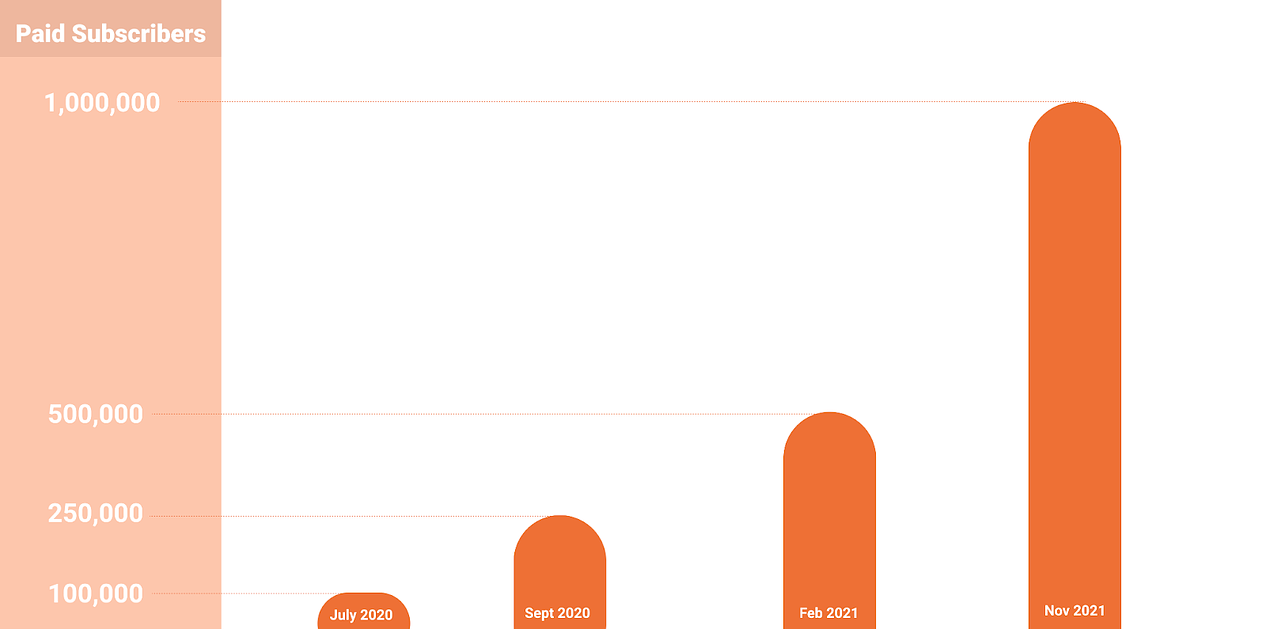First 1000 - ✍️ Substack
A quick housekeeping note before we dive into today’s piece - I am giving out five limited-edition First 1000 swag. To qualify, you have to take 30 seconds to fill out this Survey! I would love to learn more about you to provide more relevant content and resources for you in the future. Hello Folks 👋, Around two and a half years ago, after reading Andrew Chen's series A investment memo, I first became aware of an exciting new newsletter publishing platform, Substack. Like I do with any new company A16z invests in, I signed up. In part to reserve my domain name and in part out of curiosity. But the thought of actually starting a newsletter never crossed my mind. Fast forward a year later. It is Covid time. I'm locked in my old bedroom, with 4 months remaining to start my Master's program. I had more time than I knew what to do with. Throughout the lockdown, the idea of writing a Substack about getting your first 1000 customers took shape. By the end of May, I published the first case study on Roam Research, followed by Doordash. At the time, Substack was still relatively new. Yesterday the company crossed the 1,000,000 paid subscribers mark. What is Substack? Substack is the platform that powers First 1000 and thousands of others. Substack handles everything from analytics to subscriptions (for paid newsletters) and even customer support. I, in return, am freed to do the one thing I set out to do: writing. I had a chance to sit down with Hamish to talk about everything Substack. From the genesis to the media landscape to how they built products. Today, I will be discussing:
Origin StoryThe people Chris Best, Hamish Mackenzie, and Jairaj Sethi started Substack in 2017, but their history dates back years before. Chris co-founded the anonymous posting app Kik during his third year at the University of Waterloo (2010). He spent the better part of eight years at the company where he met his soon-to-be co-founders. Before joining Kik, Hamish spent just shy of two years at Sarah Lacy's tech publication Pando Daily. One of the companies he covered regularly was Tesla. In 2014, Hamish got the attention of Elon Musk and joined Tesla as its lead writer. A year later, Hamish left his Tesla job to write a book about his experience Insane Mode. While working on the book (2015), he joined Kik on a part-time basis. Jairaj, the third co-founder, joined Kik straight out of the University of Waterloo in 2012 (where he overlapped with Chris). Jairaj spent almost 6 years at Kik before co-founding Substack with Chris & Hamish. The Idea When Chris left Kik in early 2017, he wanted to spend time enjoying the simple pleasures of life that he previously didn't have time for. This includes spending time with family and friends reading and writing. From Chris's point of view, writing was one of the highest leverage use of his time; through writing, he believed, authors could change peoples' worldviews, impact how they think, and see the world. The first essay Chris set out to write was on the current state of our media ecosystem. The essay was shaped by his 8-year journey running an anonymous social media app that peaked at over 300m registered accounts. Chris shared early drafts of the essay with Hamish. Hamish did not find the essay as inspiring as Chris hoped he would. He proceeded to explain that the problem was obvious, the solution, on the other hand, was not. Hamish and Chris started riffing on how to solve the problem:
The answer to both these questions was a clear No. The underlying problem wasn't the algorithm not doing its job correctly or that moderation efforts were nascent. It was that they were doing an outstanding job at what they're supposed to: getting users to spend more time on the app. The Angle To fix the current state of media, they hypothesized, you must change the business model from one that optimizes for your time to one that optimizes for your money. Market DynamicsIt is hard to understate the impact social media had on how content is created and distributed. Social media dismantled publications into articles, with each piece competing for the attention of readers against:
As an author, to be competitive on social media, I am faced with a tough decision: I could either increase the frequency of articles I publish or increase the virality potential of each or, ideally, both. However, these objectives are entirely disconnected from what I strive to do; being a great writer. A hypothesis for this disconnect (and the guiding principle behind building Substack) is the shift around how we value attention. Attention quickly went from being one of our most abundant resources to one of the most scarce ones. Before Web2 and the emergence of content aggregators, we needed pass-time activities like baseball, and throughout the mid to late 2000s, social media emerged and gobbled up everyone's attention. As this flipping of attention took place, our content consumption diets deteriorated. It is no secret that social media algorithm optimizes for reach and engagement. The content that captures the highest reward possible on the platform "virality" is the one that optimizes for the lowest common denominator. Additionally, the decision of clicking or reading an article is seemingly inconsequential at the moment (although incredibly impactful in aggregate). The social media reward mechanics and the inconsequentiality of playing the game contributed to the increasingly sub-optimal decisions we make on what to consume at any given time. On the other hand, as time spent consuming sub-optimal content increased, so did the perceived value of high-quality content. Platforms and experiments emerged in the early 2010s to validate the market desire and increased willingness to pay for higher quality content. Hamish and Chris highlighted many of those as they introduced Substack to the world in 2017:
One of the most prominent examples of this phenomenon is Ben Thompson's subscription publication Stratechery. Stratechery covers the intersection of technology and strategy. Ben ran a highly successful one-person media business through a combination (at the time) of WordPress, Mailchimp, Memberful, and other plugins. Many speculated he was making in the realm of 7 figures at the time. Ben's phenomenal success was no secret to the tech world. He consistently wrote and explained his hypothesis of the rise of narrowly-focused niche sites that build a sustainable business on the Internet. Still, three years into Stratechery, there were only a handful of people emulating Ben Thompson's success. Why weren't there more? Perhaps because it was freakishly hard to make all the moving pieces work together. Go To Market StrategyA fundamental principle of competitive advantage strategy is new products compete on only two dimensions: Differentiation or Cost. In media, differentiation would most likely encompass a coverage niche. Cost, on the other hand, is a little bit more complex. For an ad-driven media publication, the lever a publication exercises most control over is distribution cost: how much does $ is spend to generate one article view. Customer Lifetime Value and revenue, while dictated partially by the quality of an audience, are primarily driven by external factors outside the publication’s control. The bet Substack made was the rise of media businesses competing on the differentiation axis instead of the cost one. A niche media business differs from a mass-market publication on a couple of levels: To maximize value creation for each writer from the very early days, they built the first Product for just one person: Bill Bishop, author of Sinocism. The first 1000 customersCustomer 001 Hamish knew Bill Bishop from the days he lived in Hong Kong before joining Pando Daily. Bill, at the time, lived in Beijing. He started a weekly newsletter that provided commentary and curation around the important news in China named Sinocism in both English and Chinese. That was back in 2012. Hamish wrote a profile on Bill's influence on China-US Relations soon after joining Pando Daily. Five years later into Sinocism, after numerous conversations with Ben Thompson, Bill decided to switch to a paid subscription model and planned to launch the paid version in the spring of 2017. Due to unforeseen circumstances, he had to delay the launch by a few months, and in the fall, just before he planned the launch, he got an email from Hamish reading something like:
Bill figured he would be better off having Hamish and Chris help him out rather than try to do this thing on his own. This approach led to discovering and building features that may have otherwise seemed like a post-MVP thing. A most prominent example of this was building group subscriptions in the very first version of the product. A few months later, Bill became an angel investor in Substack. Customer 002 Hamish and Chris continued with the same approach, recruiting already established writers and solving the needs of their acute publication in a generalizable manner. The second writer they onboarded to the platform was Kelly Dwyer, who started The Second Arrangement. Kelly has long been regarded as one of the most influential internet writers in the NBA sphere. Customer 003 Onwards Every new writer that joined the platform provided two distinct opportunity media opportunities to Substack:
One of the most prominent early examples of this media coverage was right after Kelly decided to join Substack. Hamish convinced Jack Marshall from WSJ to write an article about Substack two weeks after the first publication on the platform, which Vox and Techcrunch already covered. A month later, Mallory Ortberg revived her publication The Toast on Substack. Fast company covered the event. It has been 4 years since. And the media coverage of new writers starting Substack publication hasn't shown signs of slowing down. Substack the ProductTo understand how Substack attracted some of the highest-caliber online writers from the get-go, one must first understand the product and its philosophy. Substack did not sell a better product. They sold trust. What differentiates their product is the degree of alignment between the company and the writers:
By focusing on creating a writer-centric platform, Substack gained trust amongst the most established writers. Here are a few product features to highlight the extent to which Substack went to establish trust with writers:
These features increased the speed of the adoption of the product. By lowering the perceived risk of a product and growing tolerance for errors, Substack was able to gain the trust of some of the most renowned writers on the Internet and convince them to start a publication. They had very little to lose and everything to gain. Moat and defensibilitySubstack’s moat is hard to grasp at first; they built a product that lacks any sort of writer lock-in. The lack of platform lock-in, in fact, is one of the core value pillars of the product. As discussed earlier, the critical value proposition for Substack centers around trust. The more prominent writers trust the platform and move their audiences to their Substack publications, the more trust Substack- as a platform- develops with end-readers. In turn, this high degree of trust makes end-readers of a particular Substack publication more susceptible to subscribing to other Substack publications. Current Traction and OpportunityBill Bishop, along with Substack, recently celebrated their 4th anniversary along with a major milestone While the product has dramatically evolved since the early days, it still embodies much of the same ethos: it is built on trust and value creation for writers. The most significant and most obvious opportunity for Substack is expanding its discovery efforts. Beyond that, there are several pockets of opportunities for Substack to explore:
RisksThe main risk I see for Substack is the reliance of authors on social media for distribution. My guess would be somewhere around 15%-25% of all new subscribers to Substack publications come from social media platforms. With Facebook, and Twitter launching (or acquiring) their newsletter products, it is possible that they artificially hinder the distribution of any post linking back to a substack publication to make their products more competitive when failing to compete on merits. Something they have done repeatedly in the past. Substack is built uniquely around the needs of an individual creator running an independent business. Collaboration and small-team publications can still be powered through Substack, but as (or if) these publications become larger and larger, there is a tradeoff to be made on the ease-of-use v.s complexity that arises from building enterprise(y) like features to support these mid-size publications. -- If they lose that, almost nothing else matters, and from my experience interacting with the platform and the team, it doesn’t seem like this would be the case anytime soon.
I asked subscribers what they tell their friends about first 1000. Here is one of my favorites:
|
Older messages
✍️ Newcomer
Monday, November 1, 2021
and getting your first 1000 true fans
🏫 Lambda School
Sunday, October 24, 2021
The online coding school that invests in you!
📖 Matter
Wednesday, October 20, 2021
The reading app taking the world by a storm!
Turbo Boosts
Tuesday, October 12, 2021
A guest post on Lenny's Newsletter
❤️ Apps
Monday, October 4, 2021
Hi Folks , Welcome back First 1000. Today, I am doing a special edition about dating apps. Every year or two there is a new dating app being born on the app store, and hundreds of millions of dollars
You Might Also Like
🚀 Ready to scale? Apply now for the TinySeed SaaS Accelerator
Friday, February 14, 2025
What could $120K+ in funding do for your business?
📂 How to find a technical cofounder
Friday, February 14, 2025
If you're a marketer looking to become a founder, this newsletter is for you. Starting a startup alone is hard. Very hard. Even as someone who learned to code, I still believe that the
AI Impact Curves
Friday, February 14, 2025
Tomasz Tunguz Venture Capitalist If you were forwarded this newsletter, and you'd like to receive it in the future, subscribe here. AI Impact Curves What is the impact of AI across different
15 Silicon Valley Startups Raised $302 Million - Week of February 10, 2025
Friday, February 14, 2025
💕 AI's Power Couple 💰 How Stablecoins Could Drive the Dollar 🚚 USPS Halts China Inbound Packages for 12 Hours 💲 No One Knows How to Price AI Tools 💰 Blackrock & G42 on Financing AI
The Rewrite and Hybrid Favoritism 🤫
Friday, February 14, 2025
Dogs, Yay. Humans, Nay͏ ͏ ͏ ͏ ͏ ͏ ͏ ͏ ͏ ͏ ͏ ͏ ͏ ͏ ͏ ͏ ͏ ͏ ͏ ͏ ͏ ͏ ͏ ͏ ͏ ͏ ͏ ͏ ͏ ͏ ͏ ͏ ͏ ͏ ͏ ͏ ͏ ͏ ͏ ͏ ͏ ͏ ͏ ͏ ͏ ͏ ͏ ͏ ͏ ͏ ͏ ͏ ͏ ͏ ͏ ͏ ͏ ͏ ͏ ͏
🦄 AI product creation marketplace
Friday, February 14, 2025
Arcade is an AI-powered platform and marketplace that lets you design and create custom products, like jewelry.
Crazy week
Friday, February 14, 2025
Crazy week. ͏ ͏ ͏ ͏ ͏ ͏ ͏ ͏ ͏ ͏ ͏ ͏ ͏ ͏ ͏ ͏ ͏ ͏ ͏ ͏ ͏ ͏ ͏ ͏ ͏ ͏ ͏ ͏ ͏ ͏ ͏ ͏ ͏ ͏ ͏ ͏ ͏ ͏ ͏ ͏ ͏ ͏ ͏ ͏ ͏ ͏ ͏ ͏ ͏ ͏ ͏ ͏ ͏ ͏ ͏ ͏ ͏ ͏ ͏ ͏ ͏ ͏ ͏ ͏ ͏ ͏ ͏ ͏ ͏ ͏ ͏ ͏ ͏ ͏ ͏ ͏ ͏ ͏ ͏ ͏ ͏ ͏ ͏ ͏ ͏ ͏ ͏ ͏ ͏ ͏ ͏ ͏ ͏ ͏ ͏
join me: 6 trends shaping the AI landscape in 2025
Friday, February 14, 2025
this is tomorrow Hi there, Isabelle here, Senior Editor & Analyst at CB Insights. Tomorrow, I'll be breaking down the biggest shifts in AI – from the M&A surge to the deals fueling the
Six Startups to Watch
Friday, February 14, 2025
AI wrappers, DNA sequencing, fintech super-apps, and more. ͏ ͏ ͏ ͏ ͏ ͏ ͏ ͏ ͏ ͏ ͏ ͏ ͏ ͏ ͏ ͏ ͏ ͏ ͏ ͏ ͏ ͏ ͏ ͏ ͏ ͏ ͏ ͏ ͏ ͏ ͏ ͏ ͏ ͏ ͏ ͏ ͏ ͏ ͏ ͏ ͏ ͏ ͏ ͏ ͏ ͏ ͏ ͏ ͏ ͏ ͏ ͏ ͏ ͏ ͏ ͏ ͏ ͏ ͏ ͏ ͏ ͏ ͏ ͏ ͏ ͏ ͏ ͏ ͏ ͏ ͏
How Will AI-Native Games Work? Well, Now We Know.
Friday, February 14, 2025
A Deep Dive Into Simcluster ͏ ͏ ͏ ͏ ͏ ͏ ͏ ͏ ͏ ͏ ͏ ͏ ͏ ͏ ͏ ͏ ͏ ͏ ͏ ͏ ͏ ͏ ͏ ͏ ͏ ͏ ͏ ͏ ͏ ͏ ͏ ͏ ͏ ͏ ͏ ͏ ͏ ͏ ͏ ͏ ͏ ͏ ͏ ͏ ͏ ͏ ͏ ͏ ͏ ͏ ͏ ͏ ͏ ͏ ͏ ͏ ͏ ͏ ͏ ͏ ͏ ͏ ͏ ͏ ͏ ͏ ͏ ͏ ͏ ͏ ͏ ͏ ͏ ͏ ͏ ͏ ͏ ͏ ͏ ͏ ͏ ͏ ͏ ͏ ͏ ͏ ͏

